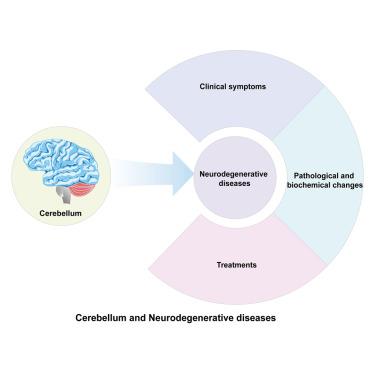Cerebellum in neurodegenerative diseases: Advances, challenges, and prospects
IF 4.6
2区 综合性期刊
Q1 MULTIDISCIPLINARY SCIENCES
引用次数: 0
Abstract
Neurodegenerative diseases (NDs) are a group of neurological disorders characterized by the progressive dysfunction of neurons and glial cells, leading to their structural and functional degradation in the central and/or peripheral nervous system. Historically, research on NDs has primarily focused on the brain, brain stem, or spinal cord associated with disease-related symptoms, often overlooking the role of the cerebellum. However, an increasing body of clinical and biological evidence suggests a significant connection between the cerebellum and NDs. In several NDs, cerebellar pathology and biochemical changes may start in the early disease stages. This article provides a comprehensive update on the involvement of the cerebellum in the clinical features and pathogenesis of multiple NDs, suggesting that the cerebellum is involved in the onset and progression of NDs through various mechanisms, including specific neurodegeneration, neuroinflammation, abnormal mitochondrial function, and altered metabolism. Additionally, this review highlights the significant therapeutic potential of cerebellum-related treatments for NDs.

神经退行性疾病中的小脑:进展、挑战和前景
神经退行性疾病(NDs)是一组神经系统疾病,其特征是神经元和神经胶质细胞的进行性功能障碍,导致中枢和/或周围神经系统的结构和功能退化。一直以来,对 NDs 的研究主要集中在与疾病相关症状有关的大脑、脑干或脊髓,而往往忽视了小脑的作用。然而,越来越多的临床和生物学证据表明,小脑与 NDs 之间存在重要联系。在几种 ND 中,小脑病理和生化变化可能在疾病早期阶段就已开始。本文全面介绍了小脑参与多种 NDs 临床特征和发病机制的最新情况,认为小脑通过各种机制参与了 NDs 的发病和进展,包括特异性神经变性、神经炎症、线粒体功能异常和新陈代谢改变。此外,本综述还强调了小脑相关疗法对 NDs 的巨大治疗潜力。
本文章由计算机程序翻译,如有差异,请以英文原文为准。
求助全文
约1分钟内获得全文
求助全文
来源期刊

iScience
Multidisciplinary-Multidisciplinary
CiteScore
7.20
自引率
1.70%
发文量
1972
审稿时长
6 weeks
期刊介绍:
Science has many big remaining questions. To address them, we will need to work collaboratively and across disciplines. The goal of iScience is to help fuel that type of interdisciplinary thinking. iScience is a new open-access journal from Cell Press that provides a platform for original research in the life, physical, and earth sciences. The primary criterion for publication in iScience is a significant contribution to a relevant field combined with robust results and underlying methodology. The advances appearing in iScience include both fundamental and applied investigations across this interdisciplinary range of topic areas. To support transparency in scientific investigation, we are happy to consider replication studies and papers that describe negative results.
We know you want your work to be published quickly and to be widely visible within your community and beyond. With the strong international reputation of Cell Press behind it, publication in iScience will help your work garner the attention and recognition it merits. Like all Cell Press journals, iScience prioritizes rapid publication. Our editorial team pays special attention to high-quality author service and to efficient, clear-cut decisions based on the information available within the manuscript. iScience taps into the expertise across Cell Press journals and selected partners to inform our editorial decisions and help publish your science in a timely and seamless way.
 求助内容:
求助内容: 应助结果提醒方式:
应助结果提醒方式:


